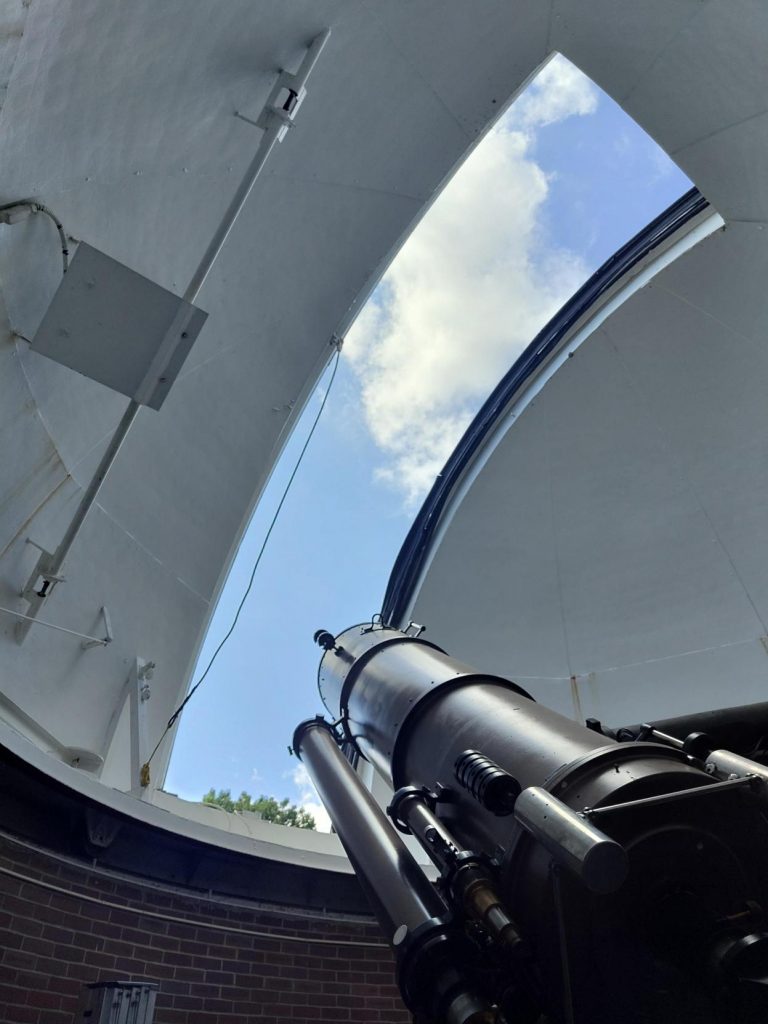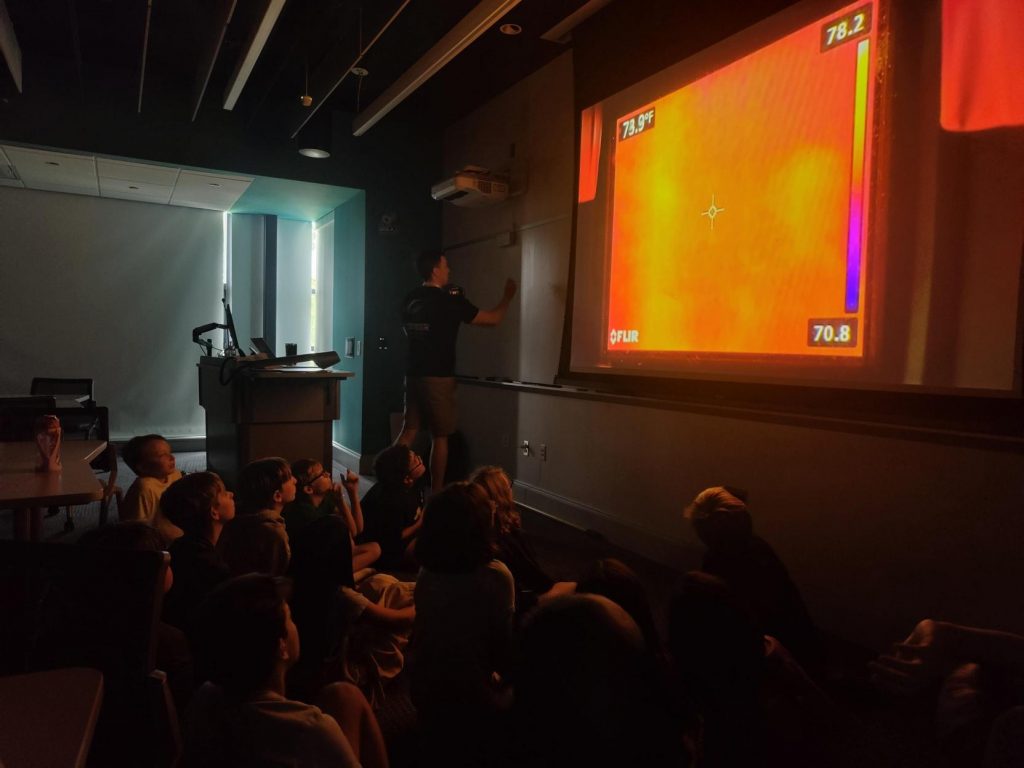Summer SAVY, Session 6 Day 3, “Astronomy Tricks of the Trade” (5th-6th)
Our class had their first attempt at viewing with some of Dyer Observatory’s telescopes today. We began with another entry in our Sun observation logs with students recording the positions of where sunspots appeared today in the Solar Dynamics Observatory image, and many noticed a drastic amount of movement over just 48 hours. Afterward, a live view of the Sun, obtained with Dyer Observatory’s hydrogen-alpha solar telescope, was projected in the library so students could see not only the sunspots but the large clouds of gas, known as prominences, extending thousands of miles above the solar surface. After showing a few videos of close-ups of solar activity, the students had the opportunity to actually look through the telescope and see the Sun up close. (Don’t worry – the solar telescope is made for safe solar viewing.). Unfortunately, clouds interfered with our trip to the Seyfert Telescope, so we are going to try again Thursday morning to view Venus and a couple of bright stars.
Next, Vanderbilt’s portable planetarium was inflated in the library. With the students inside, we used the astronomy program Stellarium and a modified projector to display a digital sky on the interior of the dome. We explored how the sky appeared and moved differently in different locations such as Tennessee, at the poles of Earth, and at the equator. We also took time to explore some of the constellations and interesting objects found within them, such as the Crab Nebula, Ring Nebula, Andromeda Galaxy, and Hercules cluster. We ended with a quick exploration of the planets Mars, Jupiter, and Saturn, including how Saturn’s rings appear to change orientation over the span of 30 years.
Once back on campus, we finished our discussion of telescopes with a few slides about how big some telescopes are, how the image is flipped by telescope optics, and how some telescopes are able to observe types of light we cannot see with our eyes. To bring the point home, we demonstrated a thermal camera, which can detect infrared light that is too red for our own eyes to pick up. The students were pretty enthralled seeing themselves glowing in infrared and how we could even detect the heat left from them walking on the floor or placing a hand on the wall. We then assembled small cardboard telescopes, simpler but similar to the Galileoscopes assembled at Dyer Observatory on Tuesday, that they could take home and use to observe the night sky. NOTE: We did go over safety and even place labels on telescopes, but it is also good to emphasize that these telescopes should NEVER be pointed at or near the Sun. Finally, to assist with observing the night sky, we constructed star wheels, also known as planispheres. These simple observing tools allow one to see what stars/constellations/objects (not including planets) are visible at any time on any night, providing a great way to learn the names and locations of constellations (if one doesn’t have a fancy smartphone app handy).
Questions:
- What was one of the most interesting things discussed in the planetarium?
- What kinds of phenomena could you see on the Sun with the solar telescope? Perhaps ask about what a prominence or sunspot is.
- What did certain things look like in infrared light? Points of interest were how eyeglasses showed up, how certain hot electronics appeared, and how we could not see the ink on the dry erase board in infrared, even though it was seen in visible light.



